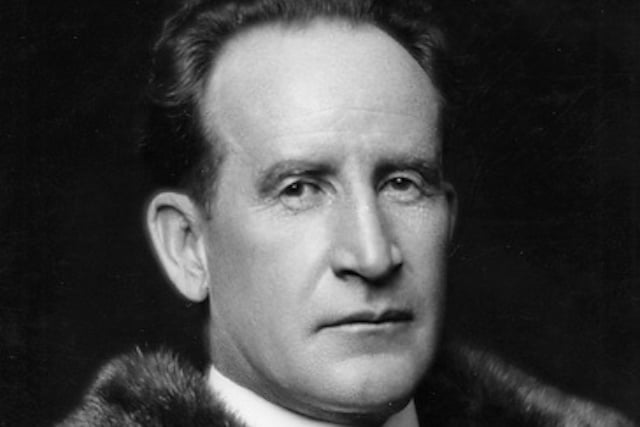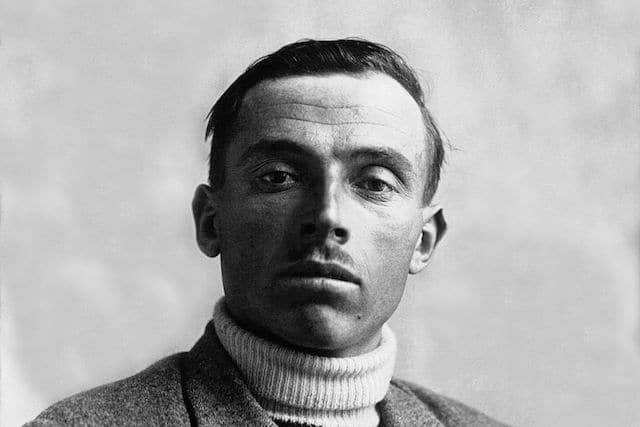Today we take a look at some notorious deaths from history that occurred under mysterious or controversial circumstances. Some of these deaths were accidental; some were suicides and some were even probably murders, but all of them left behind a lot of unanswered questions.
9. The Bahamian Businessman

Harry Oakes was an American entrepreneur born in 1874 who made his fortune during the Klondike Gold Rush. Once he was a rich man, he moved to the Bahamas to avoid paying taxes and became a British subject. As a friend of King George VI, Oakes was even given a baronetcy, but his charmed life came to a violent and sudden end on July 7, 1943, when he was brutally murdered in his own home.
Oakes’s body was found the next morning. He had been hit in the head repeatedly with some sort of spiked club, covered in gas and pillow feathers, and set on fire.
At the insistence of the Duke of Windsor, who was the Governor of the Bahamas at the time, the murder investigation was not handled by the local police, but rather by two homicide detectives from Miami named Melchen and Barker that he brought in. Two days after their arrival, they had already arrested a suspect – it was Harry Oakes’s son-in-law, Count Alfred de Marigny. Much older than Oakes’s daughter, Nancy, de Marigny had already been married twice before and developed a reputation of being a playboy only interested in his wife’s money. He was not popular with Oakes or his entourage and many considered him the obvious culprit.
The jury didn’t see it that way, however. During the trial, the most damning evidence against de Marigny was his fingerprint, allegedly found on a screen in Oakes’s bedroom. However, the defence managed to prove that the print had been planted there, probably by Melchen and Barker. After that, the case against de Marigny quickly fell apart and he was acquitted, although he was still deported off the island. Nobody else was convicted of the murder of Harry Oakes.
8. The Poisoned Nobleman

During the early 14th century, Cangrande della Scala was one of several Italian noblemen fighting for power in northern Italy. In 1311, he became sole ruler of Verona, and in 1329, he conquered his neighbors and longtime foes, Padua and Treviso. In fact, he was making his first triumphal entry into Treviso on July 18, 1329, when he fell gravely ill. He died four days later, ostensibly due to drinking polluted water.
This has been the official story for almost seven centuries, even though there were always rumors and whispers that Cangrande had been poisoned. Finally, in 2004, scientists decided to put this idea to the test. They exhumed the warlord’s body and, to their pleasant surprise, discovered that it had naturally mummified and the organs were reasonably well-preserved.
They did a bunch of toxicological tests and concluded that Cangrande, indeed, had been poisoned. He still had traces of digitalis in his system, a toxin extracted from foxglove, not to mention that the symptoms he exhibited prior to death were consistent with digitalis poisoning. There is almost no doubt anymore that Cangrande della Scala was murdered, although the ID of the culprit will likely remain a mystery forever.
7. The British Diplomat

Melville James Cox was a British journalist who served as a correspondent for Reuters to Japan in 1940. This was before the country allied itself with Nazi Germany, but tensions between Japan and Great Britain were at an all-time high after the Royal Navy stopped and boarded a Japanese passenger liner suspected of transporting German military personnel.
On July 27, Cox and ten other British nationals were detained under suspicion of being spies. They were brought to the headquarters of the Japanese military police known as the Kempeitai. After two days of brutal interrogations, Cox fell from a fourth-story window. His death was officially declared a suicide by Japanese authorities, although many people regarded the journalist’s death as simple payback.
The story presented in the Japanese media simply said that a foreign spy killed himself after being captured. According to the Kempeitai captain in charge, Hisashi Nemoto, police had plenty of reason to detain Cox because he sent a lot of mail and met often with “various suspicious persons, both Japanese and foreign.”
Obviously, these actions would have been common and even expected from a news correspondent and there was little evidence to suggest Cox was a spy. The most thorough non-Japanese report of his death came courtesy of Sir Hugh Cortazzi, British ambassador to Japan. He mentioned that an American doctor inspected the body and saw no signs of it being manhandled, but concluded that “the true facts about how Cox died will probably never be known.”
6. The Literary Prodigy

Barbara Newhall Follett seemed destined to become one of the 20th century’s greatest writers. A child prodigy, she published her first novel in 1927, when she was just 12-years-old. Titled The House Without Windows, it earned praise from the likes of the New York Times, the Saturday Review, and H.L. Mencken. Her second novel, The Voyage of the Norman D, was published just two years later, and garnered almost universal acclaim.
Unfortunately, that would represent the apex of her career, as Barbara’s world soon started crumbling around her. It began with her father leaving her mother for another woman. Suddenly, the family found itself in dire financial straits, and the arrival of the Great Depression made things significantly worse. Follett had to drop out of school and find work, which she did as a secretary. She still wrote from time to time, but the process went considerably slower, not only because she had to work a full-time job, but also because her father had previously served as her main motivator and editor in her literary career.
Soon enough, Barbara met a man named Nickerson Rogers. The two eloped, left their troubles behind and went backpacking through Europe. Eventually, they returned and settled in Brookline, Massachusetts, but, by 1939, their marriage was in tatters. Rogers was cheating on her, and Barbara was suffering from depression. According to correspondence with her friends, she started taking sleeping pills and contemplating suicide. After another fight on December 7, 1939, the 25-year-old Barbara Follett walked out the door of their home and was never seen again. Her mother accused Rogers of being responsible for her disappearance, but her body has never been found.
5. The Hippie Lawyer
With his big, bushy beard and his intimate knowledge of the counterculture of the 1960s, attorney Ronald Hughes was known to many as the “hippie lawyer.” He achieved fame in 1969 when he became involved with the Tate-LaBianca murder trial. Initially, he represented the notorious Charles Manson himself, but the two did not get along so, eventually, Hughes was replaced and ended up representing Manson Family member Leslie Van Houten.
Reportedly, Charles Manson hated Hughes so much that he once told him that he “never wanted to see him in the courtroom again.” And he didn’t. Nobody did, in fact. During a two-week recess in November, 1970, Ronald Hughes disappeared while on a camping trip. His body wasn’t found until March the following year, but it was so badly decomposed that no cause of death could be established.
Manson Family member Lynette Fromme claimed that Hughes was killed by her colleagues for his perceived betrayal of Charles Manson. However, the Ventura County Sheriff’s Department believed that the lawyer’s death was accidental. During his camping trip, Ronald Hughes encountered a torrential rainstorm and may have been stranded by flash floods. It is likely that he either fell or was hit by falling debris and drowned.
4. The Female Stranger

St. Paul’s Cemetery in Alexandria, Virginia, is home to a bizarre monument that evokes a 200-year-old event surrounding the death of a mysterious woman known today only as the “female stranger.”
In 1816, a young couple arrived in Alexandria and rented Room No. 8 at Gadsby’s Tavern. The woman soon fell ill, so her husband brought the local doctor to treat her as best he could, as long as he asked no questions about their identities. However, it quickly became apparent that her condition was terminal, and the wife passed away on October 14, 1816, ostensibly aged 23. At no point did she or her male companion divulge their identities, even when he sought out a loan to cover the burial costs.
Over the centuries, the mystery surrounding the woman only grew as the story got retold over and over again. The first newspaper article about the “female stranger” seems to be one from an 1848 issue of the Alexandria Gazette. In it, the writer described the stranger as a beautiful woman with pale complexion, and referred to her male companion as a disreputable man who paid his debts with counterfeit English currency.
Since then, countless theories have been put forward regarding who the female stranger was and how she died. One pervasive idea was that she was Theodosia Burr Alston, the daughter of former Vice President Aaron Burr, who had been presumed lost at sea a few years prior. A much more ridiculous idea suggested that she was actually Napoleon in drag, trying to start a new life in America.
There has been talk recently of possibly exhuming her body for a genetic genealogy test, to see if she has any living relatives. Until then, people could potentially get a sighting of her by renting the room where she died in Gadsby’s Tavern, as it is allegedly haunted by the ghost of the female stranger.
3. The Canadian Artist

The premature death of painter Tom Thomson represents one of the greatest losses in Canadian art history. Although he was only active for five years, some of his works are still considered an important part of the country’s cultural heritage and, should he have lived, Thomson would undoubtedly have been part of the Group of Seven, the collection of artists who pioneered the new art movement that focused on Canadian landscapes.
Thomson’s death came in 1917 when he was only 39-years-old. Unsurprising for a man who loved to paint the natural beauties of Ontario, Thomson was a passionate outdoorsman, who often went on fishing and canoeing trips. In early July of that year, the artist traveled to Canoe Lake in Algonquin Provincial Park, and he set out alone to explore the water. Just a few hours later, people spotted his empty, upturned canoe close to the dock. His body was found eight days later.
The circumstances of his demise were deemed suspicious, as were those of his burial. Although, officially, Thomson’s death was an accidental drowning, some people found it hard to believe that an experienced canoeist would die like that. Rumors of murder or suicide soon started popping up, although they were never substantiated.
Furthermore, the painter was quickly buried in Algonquin Park the day after his body was found, but his family later had his remains exhumed and reburied someplace else. This also led to speculation that the body given to the Thomson family was not that of the artist, because the real remains showed signs of foul play.
2. The Reykjavik Confessions

On the night of January 26, 1974, 18-year-old Gudmundur Einarsson left the community hall in the Icelandic port town of Hafnarfjörður after a night of partying and made the fatal decision of walking ten kilometers to his home. He was never seen again.
At first, this was considered pretty sad, but not unexpected. It wasn’t particularly unusual for people to vanish without a trace in the Icelandic winter. But ten months later, another disappearance occurred, this one under stranger circumstances. A 32-year-old construction worker from Keflavik named Geirfinnur Einarsson vanished in the middle of town, during the short distance between a cafe and the place where he had parked his car.
Despite extensive searches, his body was never found. After screwing up an earlier high-profile case, Icelandic police were under a lot of pressure to solve this one, so when they got a small lead, they pounced on it hard.
That lead came in the form of Erla Bolladottir, a young woman who had been brought in for a completely unrelated, minor crime. For whatever reason, during interrogation, one of the officers showed her a photograph of Gudmundur Einarsson, whom she recognized, claiming that she saw him at a school disco years earlier. From there, interrogators started pressuring her to remember, and she recalled a dream she once had of her boyfriend, Saevar Ciesielski, and his friends whispering outside their window.
Desperate for a lead, police insisted that this was, in fact, a repressed memory, and that Ciesielski and his friends were responsible for the murders. They warned Erla that she could not go home until she signed a statement, something the police were allowed to do for serious crimes under Icelandic law. She was kept for nine days in solitary confinement, subjected to 10-hour long interviews, many without a lawyer, until she wrote a statement saying that she saw the men carrying a body wrapped in a sheet.
Ciesielski and four others were arrested, and subjected to hundreds of days in solitary confinement until they, too, weren’t sure anymore what was real and what was not. They were eventually convicted without a shred of physical evidence or witness testimony.
It wasn’t until 2018, 44 years later, that they were finally acquitted. The Reykjavik Confessions, as the case is sometimes known, is now presented as a textbook example of false memory syndrome, not to mention, perhaps, the worst miscarriage of justice in the country’s history. As for what happened to the two men, that remains a mystery.
1. The Italian Cyclist

In 1924, Ottavio Bottecchia made sporting history when he became the first Italian cyclist to win the Tour de France. The following year, he repeated his performance, but just two years later, he was found by the side of a country road, dying from injuries sustained under circumstances which are still suspicious to this day.
On the morning of June 3, 1927, Bottecchia got up early and left to ride for a few hours. Originally, he was supposed to be accompanied by a friend, but he was busy so the cyclist set out alone around the mountains of Carnia. Around midday, he was seen stopping for a beer in Cornino, and then something happened to him on the road to Peónis. The locals found him fallen to the roadside, with numerous cuts and bruises on his face and a serious fracture at the base of his skull. He was given last rites and then taken to the hospital. Bottecchia lasted for another 12 days before dying, but he never regained full consciousness to say what had happened.
The official conclusion was an accidental death, although nobody was certain on the circumstances. Some said he suffered from a fever or sunstroke and crashed his bicycle. Others that he swerved to avoid running into a car or that he hit a boulder. But according to the locals who found him, Bottecchia’s bicycle had been placed, undamaged, against a fence, which would seemingly rule out a crash.
Quite a few other hypotheses have been put forward. Some believed that Bottecchia was killed by fascists due to his high-profile and socialist inclinations. Allegedly, a farmer later confessed that he accidentally killed the cyclist by throwing a rock at his head when he caught Bottecchia eating his grapes. And lastly,two decades later, a mob hitman in New York supposedly confessed on his deathbed that he took out the cyclist for a betting racket. The truth remains as elusive as ever.